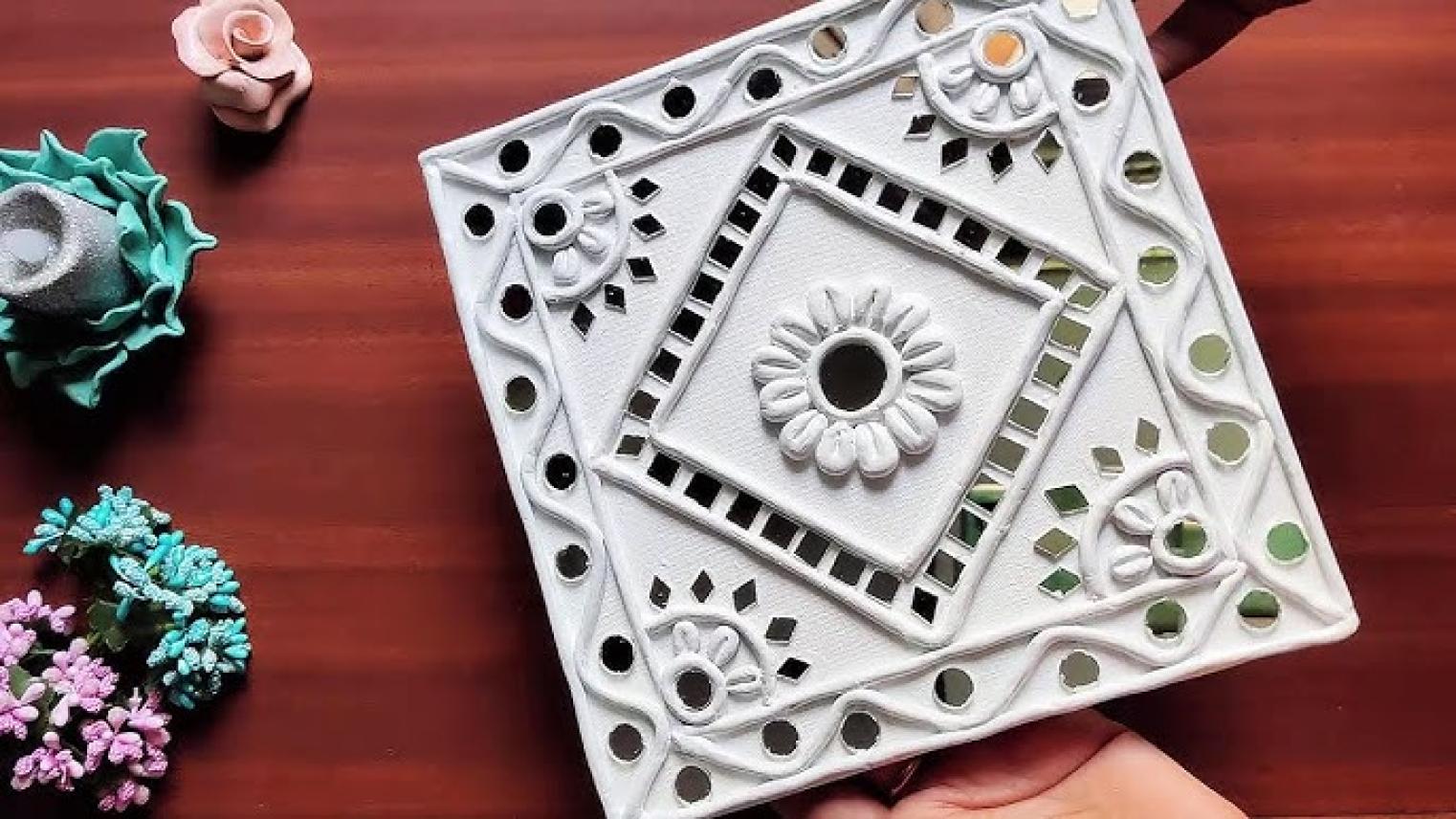Shimmering Stories in Clay: The Art of Lippan Kaam

Walk through the salt-white deserts of Kutch, and you might spot walls that glitter in the sunlight as though touched by stars. These are not ordinary walls. They are canvases of Lippan Kaam (‘work’), the traditional mud-and-mirror mural art of the Kutchi people in Gujarat, India.
Earth, Hands, and Mirrors
At its core, Lippan Kaam is simple: clay and mirrors pressed into wet mud. But in the hands of artisans, it becomes something extraordinary. The mirrors sparkle against earthy textures, echoing desert moons and starlit skies. Traditionally, women of the community would decorate the inner and outer walls of their homes, turning domestic spaces into living art.
Geometric motifs dominate: circles, diamonds, triangles, and peacocks. Each design isn’t just decoration—it carries cultural memory. A row of mirrored suns may represent prosperity, while stylized camels remind viewers of Kutch’s desert lifelines. The art is both practical and poetic: the mirrors catch light, brightening mud-walled homes, while the clay keeps rooms cool.
What once lived only in rural homes has now travelled far. Lippan art workshops are held in cities, and contemporary artists experiment with acrylics and wooden boards instead of mud walls. Yet the essence remains: the play of earth and reflection, permanence and ephemerality. Even as it evolves, Lippan carries the desert’s voice into modern spaces.
In a world of mass-produced décor, Lippan is a reminder of art born of necessity and imagination, created with what the land provides. It tells us about resilience, community, and the desert’s beauty—one mirrored fragment at a time.
The opportunity to learn lippan kaam right at the doorsteps of ANU will present itself very soon! You can enrol now to attend our Lippan Kaam workshop, in collaboration with ACT Desi, scheduled for 18 September!